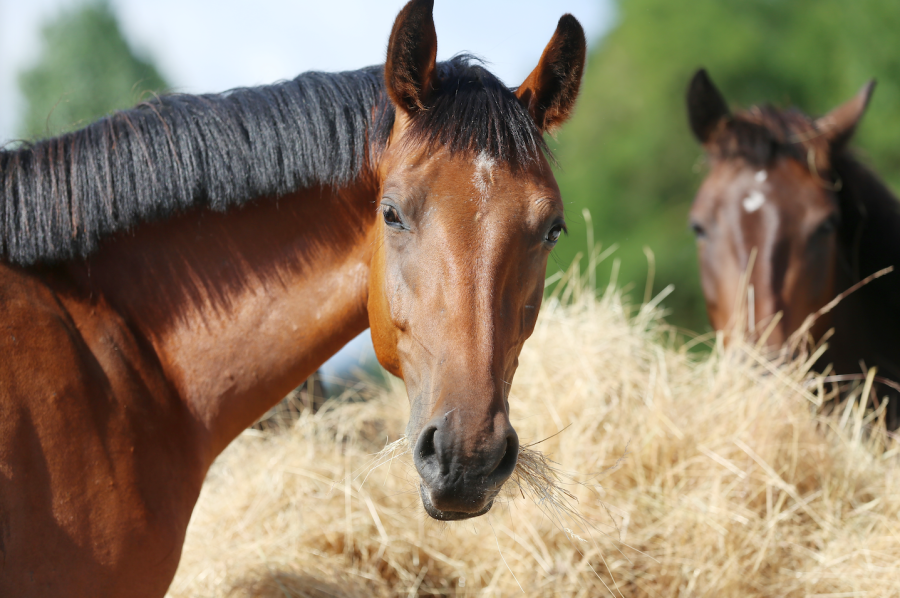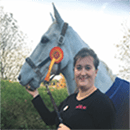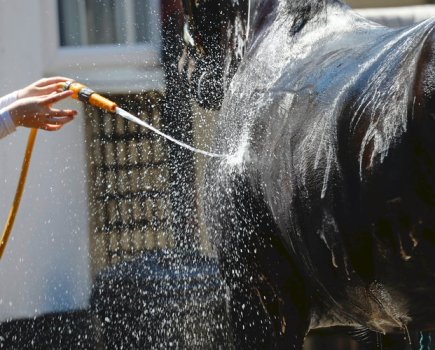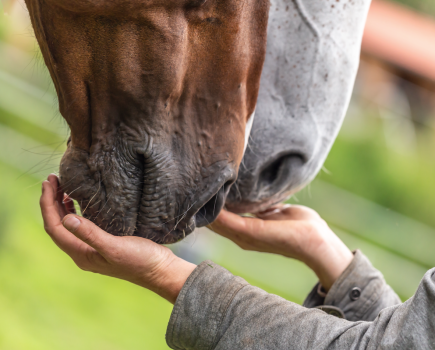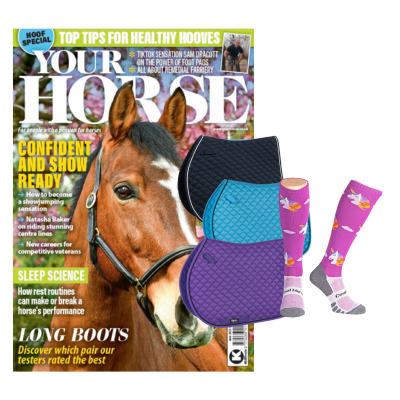When it comes to the question of hay vs haylage, most people have a personal preference about which they will feed their horse. There’s almost an element of rivalry between the two, which are both major sources of forage in a horse’s diet.
Contrary to popular belief, haylage is normally lower in sugar than hay, and it contains more protein. However, soaking or steaming hay can help to reduce its sugar levels.
Some people prefer to only ever feed haylage, while others are stalwart hay users. On large yards, you may find you have access to both. Ultimately, deciding which to feed should really come down to what is best for your horse’s individual needs.
Choosing between hay vs haylage is sometimes made simply on cost. However, there are other factors to consider, including its aforementioned sugar content and your horse’s weight, because forage lower in sugar will help to prevent said horse or pony piling on the pounds.
The size of hay vs haylage bales is also an important factor. How much storage do you have and will you be moving bales by hand? Without a tractor to help, you will need to choose small bales of hay or haylage that you can lift yourself. If you need to store it outside, the bales will need to be wrapped.
Hay vs haylage
Pros of feeding hay
Hay is…
- Cheap
- Easy to handle
- Can be soaked to reduce its sugar content, which is ideal for good doers and those who need to lose weight, plus any equines prone to laminitis or who have a metabolic disorder
- Easy to source and bulk buy
Cons of feeding hay
It also…
- May contain dust, even mould spores
- Unlikely to have nutritional analysis unless you arrange for it to be analysed yourself
- Higher sugar content than wrapped haylage, which is contrary to popular belief
- Must be stored undercover
Pros of feeding haylage
Haylage is…
- More palatable than hay
- Less likely to be dusty
- May have nutritional analysis, depending on the source
Cons of feeding haylage
It is also…
- Possible for it to go off if left standing open for too long
- Unlikely to be guaranteed quality, because you can’t see inside until the bale is unwrapped
- May contain chemical additives, inoculants and/or mould inhibitors
- Higher sugar content than bagged forage
- Big bales can be difficult to handle
Small-bale bagged forage
“Top-quality bagged forage from a reliable producer will have a consistent and high nutritional value, as well as a full nutritional analysis and quality guarantee,” says a nutritionist from Horsehage.
“The selected grasses are specifically sown for this purpose and are usually regularly reseeded to maintain grass quality, with production analysed daily.
“It is cut and turned in the same way as hay, but instead of allowing it to dry completely on the field, it’s baled when the grass has semi-wilted and the dry matter has reached around 55%. Strict quality control takes place throughout the production process in order to ensure an optimum moisture content of between 35% and 45%, together with the correct fibre and nutrient levels.
“The bales are hydraulically compressed to reduce air in the bag for optimum fermentation and to minimise the growth of mould and bacteria.
“The surviving yeast and bacteria start to ferment, causing the sugars in the grass to break down, reducing the acidity level and giving it a pleasant, sweet smell while preserving the grass. The bales are then heat-sealed into double-lined plastic bags to reduce the risk of puncturing.”
Pros of bagged forage
Bagged forage is…
- Dust-free
- Full nutritional analysis provided and quality guaranteed
- Low sugar content, with some varieties suitable for those prone to laminitis
- Easy-to-handle bales that can be stored outside
Cons of bagged forage
It is also…
- Expensive
- Not as easy to get hold of, as it needs to be bought from a manufacturer rather than directly from a farmer
Big bale haylage
Many feed merchants offer large-baled, locally-produced farm haylage that’s unbranded — or you might be able to buy it directly from the farmer. This is what I do. Big bale haylage is often made from older pasture, which may previously have been grazed. These bales are very heavy, and you’ll need help from a tractor to help you move them around.
“As with hay, previously grazed pasture tends to be perennial, containing weeds that may be unpalatable for horses,” warns Horsehage.
“After cutting, wilting and baling, the bales of haylage are wrapped to exclude air. The quality, nutritional content, dry matter and acidity may all be variable. As with any bagged forage, if it’s allowed to stand open for too long, or if the bales are punctured, the haylage may become contaminated and dry out.”
Keep an eye out for any stray plants and weeds when you’re taking haylage off the bale and pull it — don’t risk your horse eating it. I feed big-bale haylage and I do sometimes remove the odd weed or plant that shouldn’t be there, but it’s rare.
Generally, you get to know where to buy ‘good’ haylage from. Farmers cutting fields to feed to horses will usually look after their grass accordingly.
Hay vs haylage: which to choose?
“Hay is normally the cheapest type of forage,” says Horsehage. “Usually locally produced, it can be inconsistent as quality and hygiene is dependent on the type of grass harvested and its dry matter at the time of baling, as well as the weather conditions during harvesting.
“A dust-free forage is more important than nutritional value, as hay with a low nutritional content can be supplemented with either a bagged forage and/or concentrates. It should have a clean, sweet smell and a greenish colour. Hay shouldn’t be fed if it’s musty or dark.”
The golden rule
The golden rule when choosing whether to feed hay or haylage to your horse is remembering that every horse should be fed as an individual in order to suit their specific requirements.
I feed large round bales of haylage to my horses, because I have a tractor to move the bales around and a large barn to store them in. It isn’t easy to move them far by hand, unless you have several strong people to help!
A bale is placed under a lean-to next to my stables so that it is easy to access. It also means that when a horse is loose in the yard to stretch their legs, they can pick at the haylage if they want to.
When I had 10 horses on the yard — mostly Thoroughbreds, all in hard work — buying large bales in bulk was more cost effective than small bales. Haylage is easy to feed: no dust, consistent quality and it helps my sports horses hold their weight. It is also wrapped, which means it isn’t ruined by rain (my storage barn was open at the sides).
Having said that, I have (and would do again) bought in hay specifically for those who need it. Two retired ponies prone to laminitis, for example, needed soaked hay to prevent them becoming overweight.
I also once had a funny little ex-racehorse on the yard called Cranworth Blaze who only picked at her haylage. When given both hay and haylage, she ate the lot. She was partial to a few mouthfuls of straw, too. It seems she liked to have a choice!
Main image © Shutterstock

